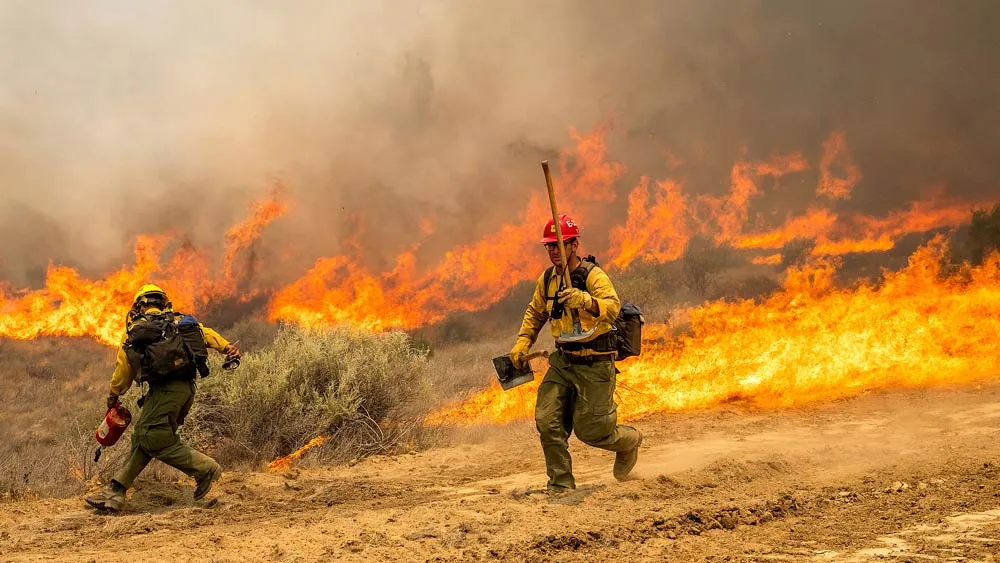January 3, 2020
Where to Go in 2020: Queer-Friendly Quito is Calling
Jill Gleeson READ TIME: 4 MIN.
Ecuador has long been a leader in LGBTQ equality, but in 2019 the South American country kicked it up a notch, legalizing same-sex marriage.
With Ecuador continuing to roll out the rainbow carpet, there's never been a better time to hit up historic, culturally-rich Quito, the country's charming capital.
Craft and Culture
It's peculiar but true: everyone's favorite handmade straw chapeaus aren't named for where they're made, but for where they were first exported. Get the real deal at Ecuador's oldest Panama hat producer, Homero Ortega, which also houses a museum and offers guided tours.
Should you be visiting Ecuador in spring, be sure to seek out and sample fanesca. A traditional Lenten stew unique to the country, it's stuffed full of ingredients like cod, grains, peas and beans. Every cook makes it differently, but one of the best can be found at the little cafe inside Centro Cultural Metropolitano.
Sure, there are bigger, flashier joints to lay your head, but gay-owned Casa Joaquin Boutique Hotel is an exquisite little gem tucked away in a restored colonial house. It's also located in the pleasingly pink Mariscal district, home to most of Quito's queer nightlife, like the trendy Kika.
You don't have to dig religious icons to stand in awe of the Virgen del Panecillo, a 135-foot-tall aluminum and mosaic sculpture of a winged Virgin Mary. Dedicated in 1976, it sits on a hill above Quito, affording Instagram-worthy 360-degree views of the city below.
Living History
Quito is UNESCO's first World Heritage Site city. It boasts the biggest, best-preserved historic center in Latin America, and Plaza de la Independencia has been its heart since the 16th century. Take a gander at the monument feting Ecuador's independence from Spain, then sit for a spell and watch the Plaza's glorious celebration of humanity, from indigenous women hawking peacock feathers to buskers singing for their supper.
The twisted, cobblestoned La Ronda has long been home to Quito's artists, giving the street a winsomely funky, boho vibe. So, too, do the facades of the restored 18th-century buildings lining it, which have been painted in bright colors, and still sport quaint balconies bursting with potted flowers. If you go, bring your credit card. There's serious shopping to be found.
Spending of credit cards, you might max yours out bunking at the Hotel Plaza Grande, but it'll be worth it. Set within a meticulously renovated Colonial mansion, it sports not only a stunning view of Plaza de la Independencia but also restaurant La Belle Epoque, where live opera is performed.
Day-Tripping
Ecuador is famed for its indigenous handicrafts, which can be purchased in villages a couple of hours drive from Quito. Otavalo offers the best shopping in the country at the sprawling Plaza de los Ponchos market, where the Kichwa ethnic group sell their legendary textiles. But there is plenty else up for grabs, including everything from carved wooden masks to jewelry, spices and more.
If you're into leather, head to Otavalo's neighbor, Cotacachi. It offers a main drag lined with shops selling a wide variety of handmade leather goods, all of it shockingly inexpensive by American standards. After shopping, fuel up on hornado (roasted pig) at Do�a Rosita's stall in the Central Market. Rosita is a master at making the beloved dish, placing second in the country's hornado championship.
Just a couple hours south of Quito sits the iconic Cotopaxi National Park, Ecuador's most-visited after the Galapagos. The active volcano from which the park takes its name soars 19,347 feet high, the second-highest Andean peak in the country. If you got the guts (and the skill), you can climb it or opt for less-intense adventures like horseback riding or trekking.
Jill Gleeson is a travel and adventure journalist based in the Appalachians of Central Pennsylvania. Find her on Facebook and Twitter at @gopinkboots.


